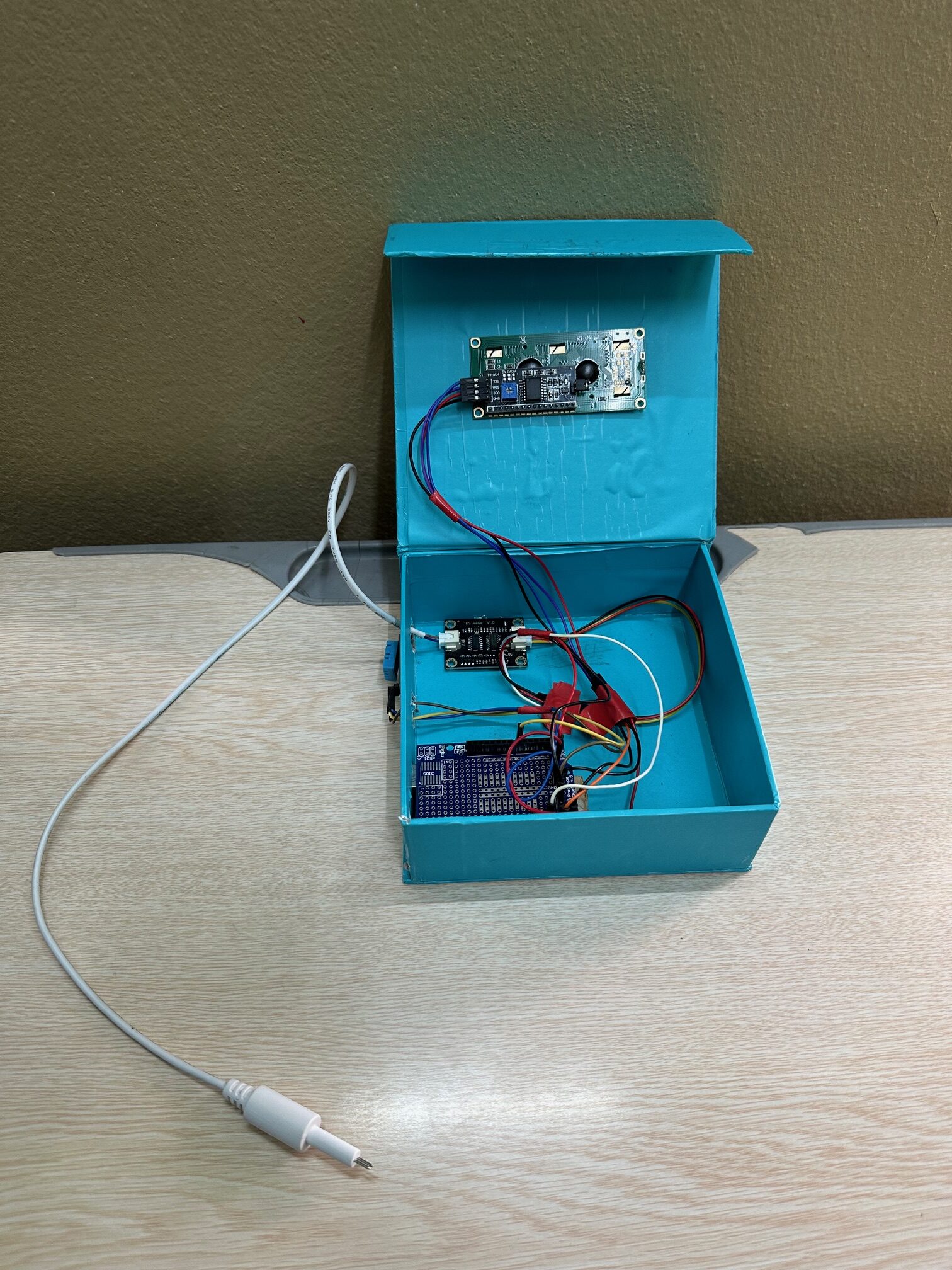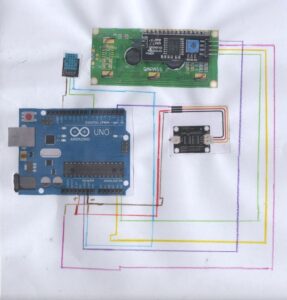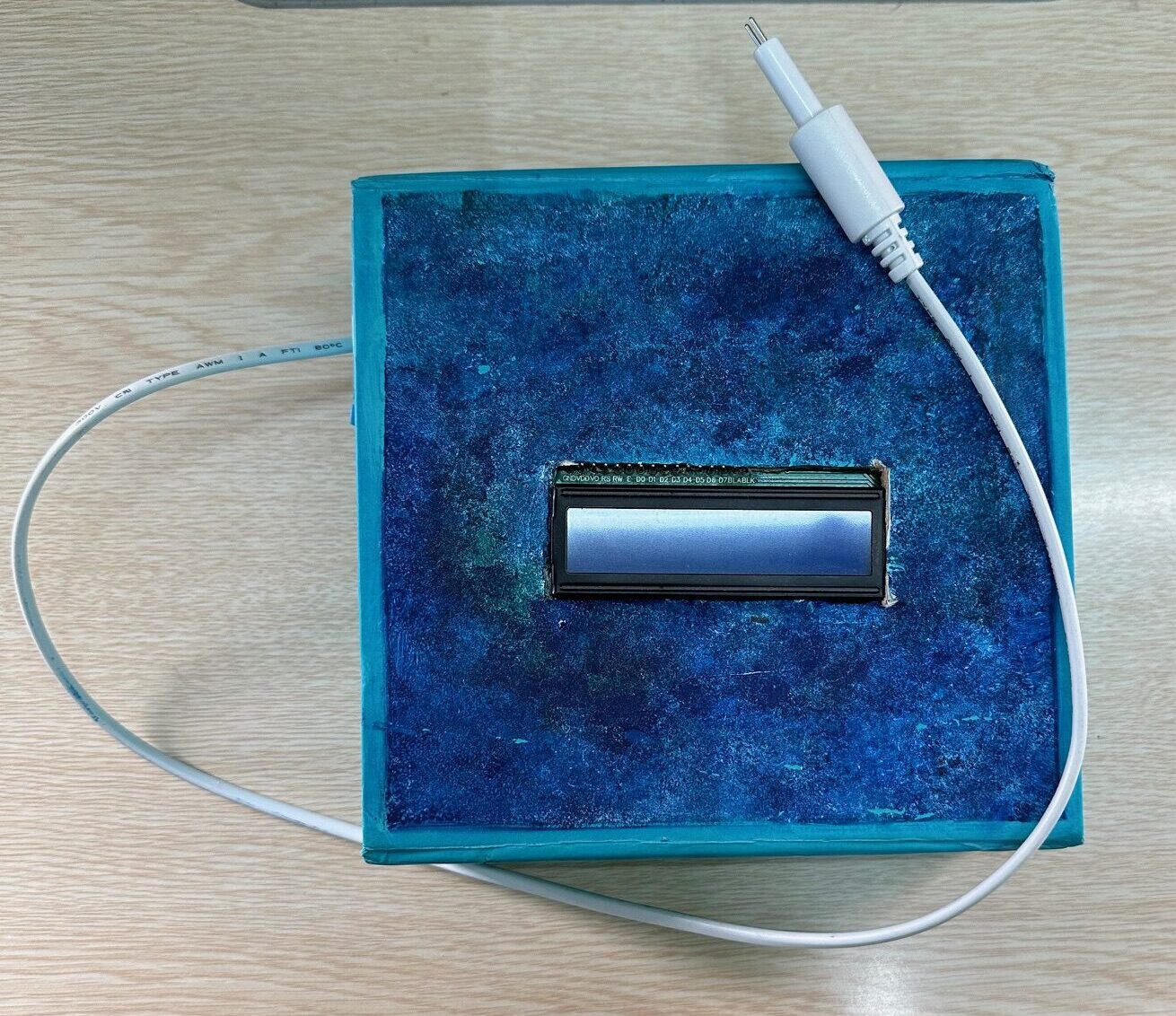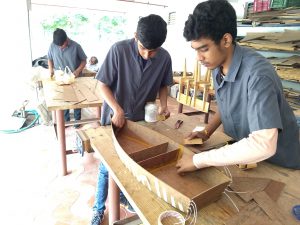Author: Meghana Kata, Grade 8
Abstract – This article presents a report on the Components, Scientific theory, Procedure and Precautions required to be taken for making a TDS Meter that detects the presence of salt in water. The method shown in this article can be used to make a TDS meter which can be manually monitored and used according to one’s convenience.
A TDS meter is a mechanical device that detects the total dissolved salt (TDS) levels in the water. We use a TDS meter to measure the TDS of the nutrient water in our tank. TDS is measured in PPM which means parts per million.
Components and how they work :

- To make a TDS meter, 4 main electronic components are needed : TDS sensor, DHT 11 temperature sensor, LCD display and Arduino.
- The main component is the TDS sensor. It has a cable which senses the electrical conductivity of the solution it is dipped into.
- The electrical conductivity is then multiplied by a proportionality constant to give the value of TDS, all of this takes place in the Arduino which is a microcontroller.
- A DHT11 temperature sensor, judging by its name, measures temperature as temperature plays a crucial role when calibrating the TDS meter.
- LCD display stands for liquid crystal display. This electronic component displays output based on how it is coded.
The scientific theory behind a TDS meter:
TDS meter measures the total dissolved solids level. The TDS meter has a cable which is inserted into the water. This is an AWM type cable (Appliance Wiring Material) and it is made of copper and polyvinyl chloride (PVC). The copper in this wire detects the electrical conductivity of a solution. The electrical conductivity plays a vital role in the calculation of TDS:
TDS=electrical conductivity x proportionality ratio.
The electrical conductivity of the water will vary according to the amount of salt in it (due to which TDS will be different for different substances) because normal water is a bad conductor of electricity but salt water is a good conductor of electricity.
When the positive ion(Cation) of an alkaline substance reacts with the negative ion (Anion ion )of an acid:
2Na ( s ) Sodium + Cl 2 ( g ) Chlorine → 2NaCl ( s )
In this reaction, two atoms of sodium which are basic in nature react with two atoms of chlorine which are acidic in nature to form two molecules of sodium chloride.
Procedure :
- Firstly the TDS sensor should be coded and connected to the Arduino.
- The LCD display should also be connected to the Arduino followed by the temperature sensor.
- In this technique an I2C module for the LCD which comes with a potentiometer has been used.
- After completion of circuits it is kept in a container to fix the components.This will help the project by protecting electronic components that may come in contact with water.We have used a cardboard box for the purpose.

In this image we can see a LCD and a potentiometer connected to the Arduino. The TDS sensor is also connected to the Arduino.
Care and precaution:
- Only the cable of the TDS meter should be put into the water.
- If any electronic components come in contact with any type of fluids, the components will fail.
- If the TDS meter cable is dipped into any fluid with a higher TDS than calibrated, then it will give erroneous results.
- Make sure that after use there is no residue left on the cable.
Conclusion:
A TDS meter will help us know the concentration of salts in a particular sample of water and take necessary precautions.




